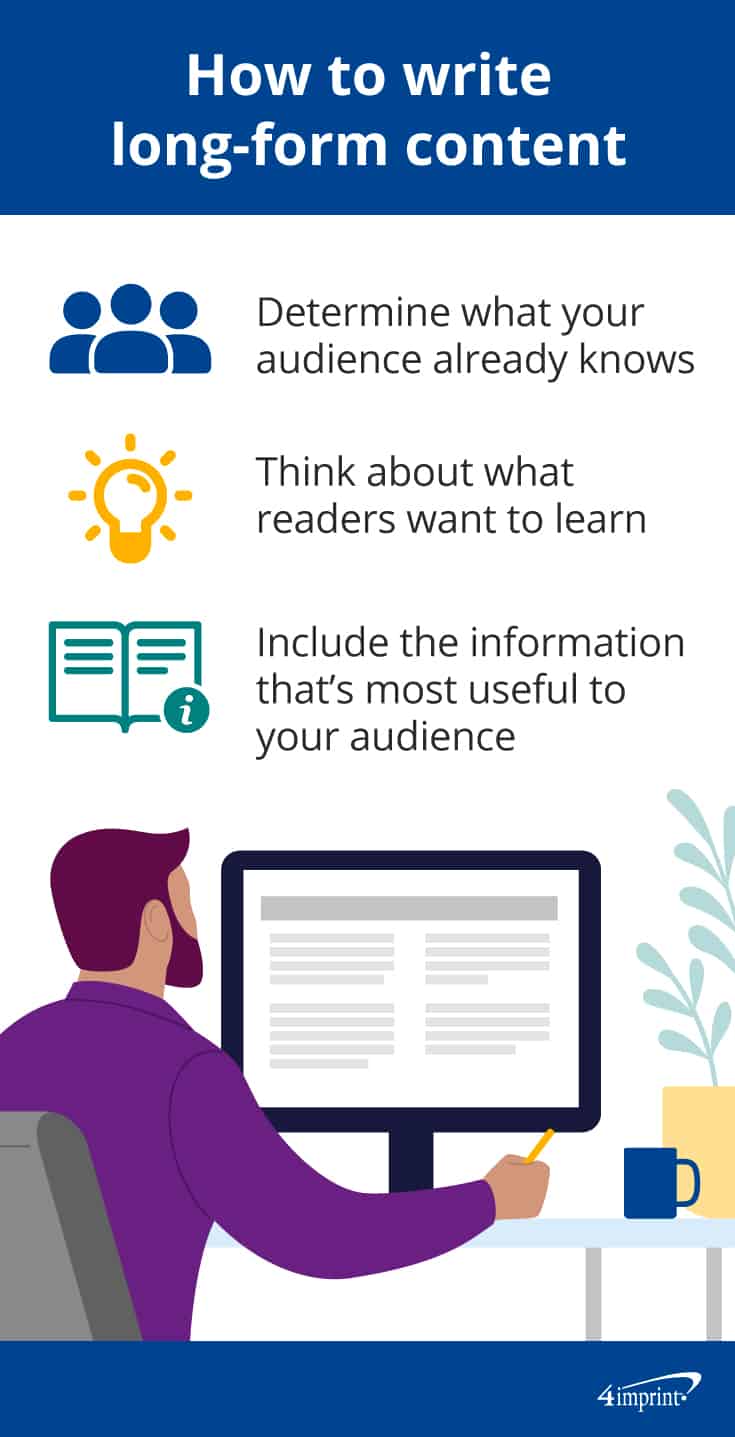Long-form content can generate top-quality leads and make your brand appear more trustworthy. Long content (3000 to 7000 words) gets twice as many page views and 24% more social media shares than average-length posts.

One company says incorporating long-form content was a huge factor in tripling their website visitors’ average time on site from 1:33 to 4:35 minutes. This is just the tip of the iceberg when it comes to the benefits of long-form content.
Incorporating this content marketing strategy may feel difficult and overwhelming, but it certainly doesn’t have to be. If you’re wondering how to write long-form content and how to use it to generate ideal leads, we explain.
What is long-form content?
Whether the length of a blog post, article, case study or other content is long enough to be considered “long-form” is an opinion that varies from person to person. Some people say long-form content is 2000 to 3000 words or more; others say it is 1200; and still others say 1000.
Rather than focusing strictly on word count, the most important thing is that your article is long enough to give the reader the information they’re looking for. You can help gauge whether your long-form content is long enough by asking readers to rate your content as “Just what I needed” or “Not enough information.” To incentivize people to provide feedback, offer a lead generation giveaway in return. Consider an embroidered cotton tote, a cooling towel or a Paper Cover Notebook.
How to make long-form content strategic
Long-form content can help boost your search engine ranking and improve your organic reach.
It’s also viewed as more authoritative than shorter articles. However, just because your content is long doesn’t mean it’s working hard for you. To reap the benefits of long-form content, it needs to be strategic and well thought out.
Start with your business objectives. What do you want this particular content piece to accomplish? While it can be tempting to try to make one article accomplish multiple things, choose just one or two of the most important, most realistic goals. For example, your goal might be “Generate X% more email subscribers” or “Generate X number of white paper downloads.”
Also consider your audience. What type of people do you want on your email list? Anybody in your overall audience or a specific persona? For example, your overall audience may be construction CEOs/decision-makers—but you may be looking to specifically generate more residential construction leads, rather than commercial. Your long-form content, then, should be tailored to residential construction CEOs.
Once you have your goal and audience nailed down, it’s time to write.
How to write long-form content
Long-form content is meant to be highly informative. By the end of the article, the reader will feel like they have a much deeper understanding of the topic than when they started reading. To make writing easier, break it down into steps.
Start with your audience. What knowledge do they already have about the topic? What do they want to learn? How will the information you provide be useful to them? From there, you can determine what the most important takeaways are and outline accordingly. Devote whole sections to the top takeaways and create subsections where you need to delve further.

When writing, keep in mind that for readers to want more, they must feel like they learned something. It’s not time to sell—yet. Help them get to the end of your article by offering a lead generation giveaway to people who scroll to the bottom. Include a form at the end of your article offering a free gift to those who give their contact information. Depending on your industry, giveaways could be a cosmetic bag, a compact Deluxe Tool Set or a mug with a lid.
Reel in top-quality leads
By creating robust content for a specific goal and keeping your audience in mind, you’ll easily reap the benefits of long-form content, helping you to draw in ideal leads for your business. Good luck!
Key Takeaways:
- Focus on the information you’re providing, not strictly the word count
- Choose one or two objectives you want the article to accomplish
- Carefully consider your audience and key personas
- Write to provide the most important takeaways
